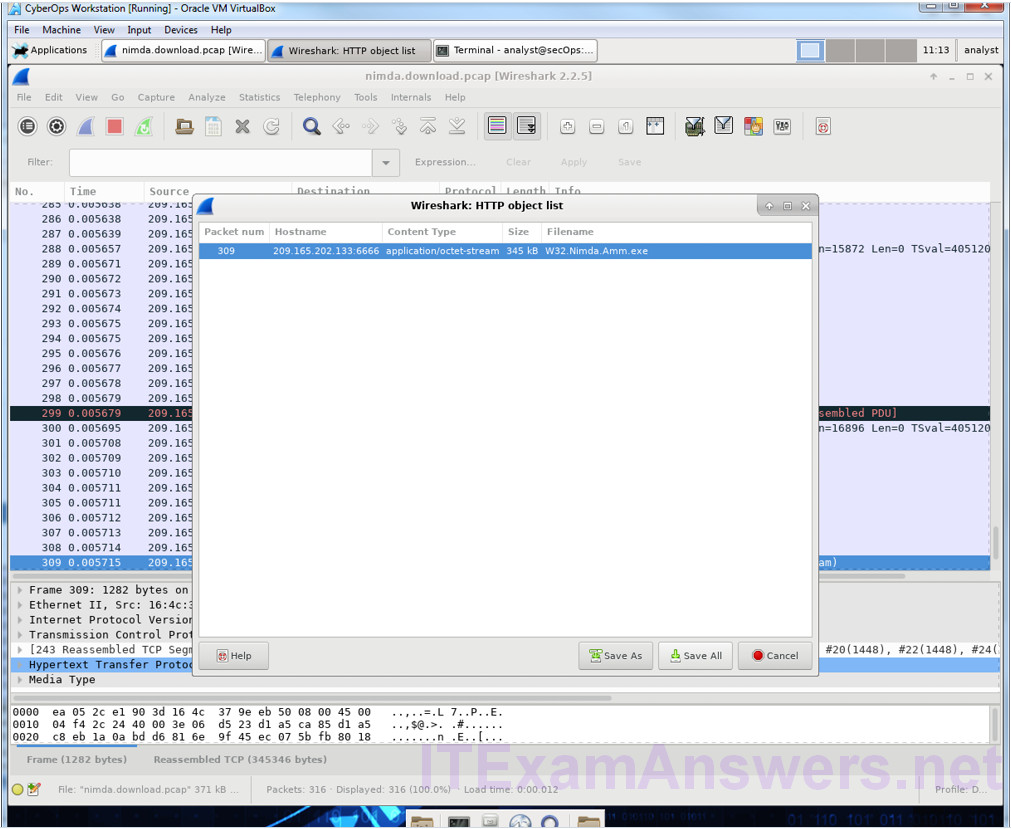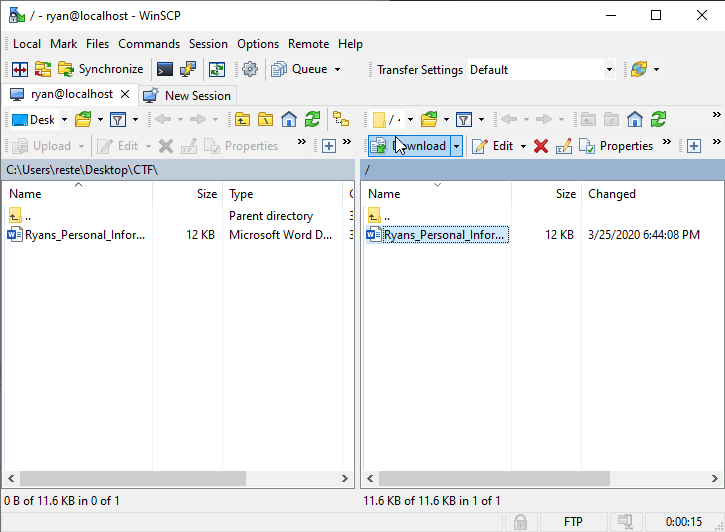

- #Extract file pcap wireshark code#
- #Extract file pcap wireshark download#
- #Extract file pcap wireshark mac#
Myfile.csv: name of csv file, you don't have to creat this before running the code as it will be autimaitcally created in Data folder. Myfile.pcap: name of pcap file in Data folder. tshark -r Data\myfile.pcap -E header=y -E separator=, -T fields -e ip.src -e ip.dst -e ip.proto -e eth.src -e eth.dst > Data/myfile.csv
#Extract file pcap wireshark mac#
You can select the features from this tshark link, based on the protocol.Įxample: Extract IP address (source and destination), Protocol, MAC address (source and destination) from a PCAP file and output a CSV file. The list of the fields/features can be long to be mentioned here.

E header= y: if you want to have the name of features in the output CSV files. The above code will read a pcap file, extract the features (fields) and output a CSV file. What can you find out about those packets? You can print the packets or use Is() or show() to see more information.Tshark can do that using the following instruction: tshark -r (path of pcap file) -E separator=, -E header=y -T fields -e field1 -e field2. Task 3 - Analysis with Python and tools (other packets) Use Python/Scapy to look at the packets saved in the second pcap file created in task 1. E header y: if you want to have the name of features in the output CSV. For example, using the tls and (http or http2) filter. Tshark can do that using the following instruction: tshark -r (path of pcap file) -E separator, -E headery -T fields -e field1 -e field2. Open a website, for example Check that the decrypted data is visible. d) Use ipwhois to find and print to the screen the asn_country_code and asn_date for each unique IP. In Wireshark, go to Edit -> Preferences -> Protocols -> TLS, and change the (Pre)-Master-Secret log filename preference to the path from step 2. c) How many unique destination IPs are there? Hint: Create a Python set() from the list of IPs to eliminate the duplicates. b) How many total destination IPs are there in the list? Hint: Use Python's len() function to find out how many items are in a data structure. Wireshark: export bytes To find this you will have to drill down in the packet you want, depending on the protocol. Hint: Use a loop again to read the packets, and append each destination IP to a list. a) From the pcap file with IP layers, save the destination IP addresses. Task 2 - Analysis with Python and tools (IP addresses) Use Python basic data structures (for example, dictionaries and lists), as well as the IPwhois module to find out more information about the packets in the first file created in task 1. b) Create a second pcap file with all other packets. a) Create one pcap file with all packets having an IP layer.
#Extract file pcap wireshark download#
Modify the code from the class demo of Python/Scapy to create two separate filtered pcap files. Visit the Wireshark download site, and download the appropriate Wireshark package or installer for the operating system running on the system which is to be. Task 1 - Filter Pcap capture to select packets in Python/Scapy Open the pcap file in Python/Scapy. Submission Submit detailed lab report with screenshots of results, code snippets, and description of what has been done and observed. The ipwhois module may need to be installed separately.) Please see the notes posted on Blackboard under Unit 1 called More on Scapy and other Modules for more details to help with this lab, as well as the code demo also posted there. (If you have SEED or Kali VM, Scapy may already be installed there. The environment can be used for Tasks 2 and 3 - the Scapy and ipwhois module can be installed through the Packages tab. tshark -nr test. Transcribed image text: Lab Overview Create a packet capture file (pcap) using Wireshark or similar tool, then use Python/Scapy to extract information about the traffic captured. This command will extract files from an SMB stream and extract them to the location tmpfolder.


 0 kommentar(er)
0 kommentar(er)
